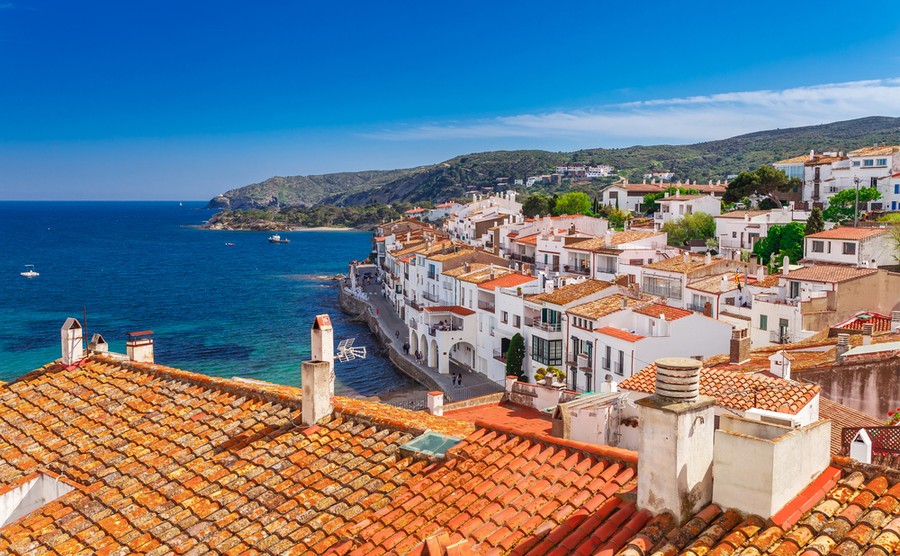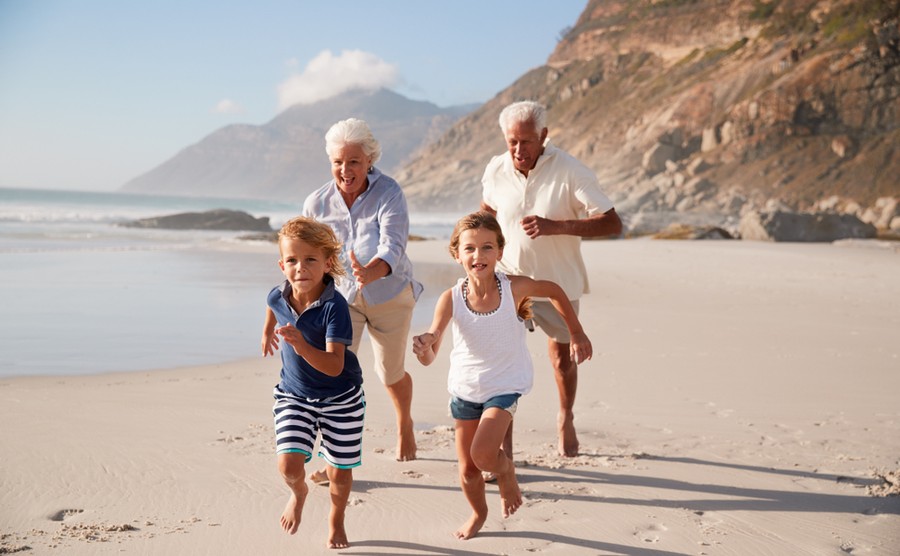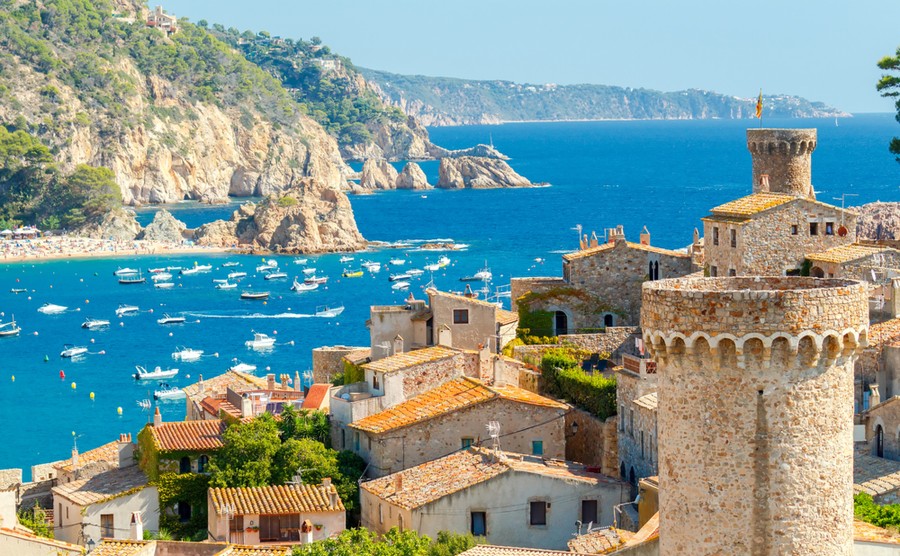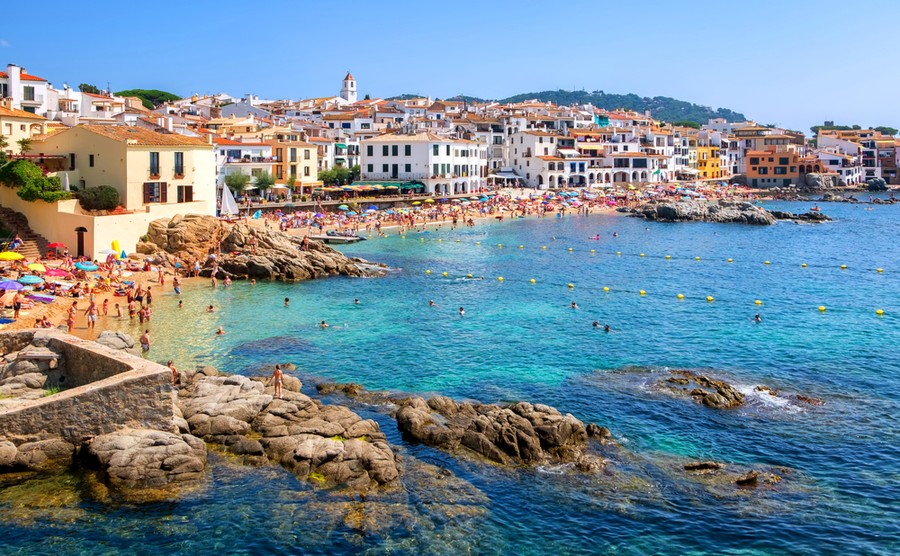A retirement on the Costa Brava will never be boring. North-east Spain is the work-hard-play-hard part of the country, and if you don’t need to work hard any more, so much the better! So, what will you spend your days doing if you retire to the Costa Brava?
The Costa Brava is truly a wonderful part of Spain. I know, I live here and have lived here for 12 years. It has everything, especially beauty. That includes a stunning coastline, densely wooded hillsides, pretty villages nestling in the valleys and views of the magnificent Pyrenees mountains.
FIND your perfect home on the Costa Brava
In case you are wondering, “Costa Brava” is Catalan for “Rugged Coast” and it really is, with steep cliffs towering over small, hidden bays. You can walk most of it on the Camí de Ronda, a path that winds around the coastline.
There’s so much to do here too, especially for foodies, with a vast number of excellent tapas bars and restaurants to enjoy.

Cadaques, Costa Brava
A homage to Catalonia
The Costa Brava runs from the French border to the town of Blanes, some 200 kilometres in all. It is in the ‘autonomous region’ of Catalonia, where there are two official languages, Castilian Spanish and Catalan. Although Catalan is widely spoken and is the language of lessons at school, Spanish is accepted, especially if you are from another country.
It’s worth learning some basic Catalan though as most menus will be written in Catalan and it is politeness to the locals who will appreciate even just a few words from you.
The northern part of the coast is really beautiful – not dissimilar to the grand corniches of the French riviera – as the steep roads wind parallel to the sea with some fantastic views and hairpin bends. The road which runs from Begur to Llafranc is one such as is the road between St Feliu de Guixols’ two beaches.
Climate
The Costa Brava enjoys a Mediterranean climate with hot and sometimes humid summers, warm autumn and spring when it receives most of its rain and mild winters.
Inland you might get a frost in winter and it has, on rare occasions, snowed but this is unusual. The coast receives winds from eight directions, some being warm and humid or, like the Tramuntana, cold and dry and very strong. It is more than welcome in the summer but can feel uncomfortable in the winter.
Daytime average temperatures in January reach 14º and in August 28º. October and November are the wettest months and the summer months see an average of 11 hours of sunshine daily.
For those looking for a retirement in Spain with warm weather for most of the year, but all four seasons, the Costa Brava won’t disappoint.
Property market
According to the latest analysis by Lucas Fox, 26% of properties bought in the region were bought by non-Spaniards, and 16% were from the UK and Ireland. More than half of all properties purchased were for use as second homes.
It is a very popular area and many people let out their homes in July and August, which are the busiest months and also the hottest. Some towns saw a small increase in prices while others a small decrease.

Welcoming the grandchildren for the summer!
Getting there
Two airports serve the Costa Brava: Girona in the north and Barcelona to the south. Girona tends to be a seasonal airport for flights from the UK, with travel from Stansted and Luton, Bristol and Bournemouth amongst others. There will be flights from Southend this summer. Barcelona El Prat offers long-haul and short-haul international flights as well as many to Spanish destinations.
You can get to the Cost Brava easily by train too, making it Spain’s best option for those unwilling to fly so much for climate reasons. Take the Eurostar to Paris from where you take a TGV which will take you Figueres in northern Costa Brava, then onto Girona and Barcelona. You can easily have breakfast in London and dinner in the Costa Brava without flying.
If you fancy driving down, there are several possibilities. The most used option is a drive through France, crossing the border at Perthus. Ferries from Portsmouth, Plymouth and Southampton as well as Dover and Folkestone will all get you across the Channel. Another and increasingly used route is from Santander, crossing Spain rather than France to get to the Costa Brava. It should take around 7.5 hours to drive to Lloret de Mar and about the same to Figueres, but why not stop off and discover more of Spain on your way? Ferries go from Portsmouth, Plymouth and Cork. You could also take a ferry from Portsmouth to Bilbao.
If you’re not quite ready to retire to Spain, maybe start with a holiday home and see how you like it? Download your free guide, How to Buy a Holiday Home in Spain.
Keeping busy
Retirement gives us a chance to do all the things we have wanted to do but couldn’t when we were working. Here on the Costa Brava, there are several clubs and associations to help you do just that. The U3A Costa Brava (University of the 3rd Age) is an association run by its own 400+ members. It has groups covering practically every pastime from walking to art, history to bird watching, cycling to mahjong. The only requirements are that you are over 50 and speak English so members are from many countries.
If you enjoy sports, you can get involved in golf, tennis, cycling, hiking, water sports and kayaking and petanca (boules in France). Get to know the local people through the Club International Costa Brava, which aims to bring together expat residents of Costa Brava with Spanish / Catalan neighbours.
In the north of the Costa Brava a group of British and Catalans put on an annual pantomime, so for am-dram enthusiasts this is a chance to shine. There is also a choir of mostly British people based around Begur. The British Society of Catalonia is based in the north of the region and puts on many events for its members.
Two parts of the same coast
The South
One might be forgiven for thinking that the whole 200 km of coastline is the same, but it really is not. Starting in the south, Blanes, Lloret de Mar and Tossà de Mar are well known tourist spots which have been popular since the 1960s. Here you find long, open beaches but perhaps a few too many high-rise apartment blocks. These days there is a strict limit on construction close to the seafront, but fro those who quite fancy a high-rise apartment with sea views, this could be perfect.
These three towns possibly offer the most active lifestyle for people planning to retire here.
Lloret de Mar
For those who enjoy golf, Lloret has everything from pitch and putt to the biggest golf course on the Costa Brava, PGA Catalunya. The British supermarket in the town is very popular too! The centre is made up of a cluster of narrow pedestrianised streets with plenty of shops to keep you amused. The town has the beautiful Santa Clotilde Gardens, the perfect place to wander in the afternoons when it is too hot to be on the sandy beach.
Tossà de Mar
This the quietest of the three out of season, but is undoubtedly the prettiest. Tossà de Mar was called “Blue Paradise” by the French artist Marc Chagal and it was a very popular place with artists generally.

Tossa de Mar
Several films were made there between 1951 and 1978, the most famous being Pandora and the Flying Dutchman starring James Mason and Ava Gardener whose statue stands in the town. The beach here is 385 metres long and is overlooked by the castle and ancient city walls.
Its population of just 5,500 swells considerably in the summer when the town takes on another face. With its many festivals and the Rumba Festival held in June, it is a busy place catering to people of all nationalities. The area around MarTossa beach is a lovely place to look for a home.
Properties on this part of the coast tend to be more reasonably priced than in the north but there are some very exclusive – and expensive – developments too. As a guide, a two-bedroom apartment in Lloret de Mar costs from €200,000 and a four-bedroom detached villa in Tossa de Mar from €279,000 up to several million Euro.
The North
The northern stretch of the Costa Brava is called the Empordà and that is split into two sections, Alt Empordà and Baix Empordà (upper and lower Empordà).
The coastline from Sant Feliu de Guixols in the south up to Roses in the north is one of the most beautiful in all of Spain, with high craggy rocks hiding little inlets and bays of clear water. Some of the beaches are quite long and sandy while others are small and often tricky to get to on steep paths down to the sea.
Baix Empordà
This area is very popular with people from Barcelona who have bought second homes. The AP-7 motorway and dual carriageway C-65 will get them to Sant Feliu in 90 minutes. For people living in Girona, the drive is just 45 minutes.
It is undoubtedly a wealthy area and the prices of most things reflect this. The best shopping is in Platja d’Aro in Baix Empordà which is a purpose-built holiday town and was once famous for package tours, although the authorities now discourage such operators. These days it has become a popular place to live: an all-year-round town with everything you could want or need for a happy retirement. That includes films in English twice a month. It does get extremely busy in summer, partly due to the many camping sites nearby.
SEARCH for properties along the Costa Brava here
Sant Feliu de Guixols
For a quieter place just 15 minutes’ away, go to Sant Feliu de Guixols. With two beaches, separated by a rocky promontory, it is very pretty seaside town suitable for all ages. It has a lovely promenade, a pedestrianised centre and some delightful bars and restaurants. Many retired people have moved here because of its vicinity to Girona and its airport.
You’ll probably want to be close to the beachfront as it is a very hilly town or perhaps in an urbanisation a few kilometres away. Property starts at around €225,000 but some of the region’s most exclusive homes are here and cost many millions.
Palamòs
A little further up the coast Palamòs, is the main fishing port of Baix Empordà and is a true working town with plenty of leisure activities. The long, flat promenade runs into the next town of Sant Antoni de Calonge and is ideal for a daily walk or cycle. You can stop off for a coffee or something stronger as it is lined with bars and restaurants, many specialising in fish bought from the fish market in town. There are a wealth of excellent tapas bars in the old town, some remaining open all year.
Recently, there have been new developments built of upmarket apartments in the town but for a villa, you will need to look at one of the nearby urbanisations.
Palafrugell

Calella de Palafrugell
Going north about 10 km you come to Palafrugell which is some four kilometres inland. The town has three magnificent beaches though, Calella de Palafrugell, Llafranc and Tamariù where you can find some fabulous homes perched on the hillsides overlooking the sea.
The area is popular with British people (amongst others) and the town of Palafrugell has attracted many retirees recently who want all amenities to hand. Here too, you can see films in English (and in almost every other language) as the local cinema screens foreign films in the original version with Spanish subtitles. The town is not particularly touristy: you’ll find that by the beaches and has a daily food market throughout the year.
There are several pleasant residential areas. Those nearest to the beaches are the most popular and expensive. A four-bedroom villa in Tamariù will cost from €350,000 upwards and a two-bedroom apartment in Calella de Palafrugell with similar prices. Of course, you can also spend millions if you wish to.
Villages
Torroella de Montgrí is a lovely little medieval town with a busy feel. Between it and Palafrugell and a little inland are some glorious ancient stone villages lying close to the rice fields where life is very peaceful (except in high summer when visitors come from all the surrounding area). Peratallada, Palau Sator and Pals are all really quaint and all have some first-class restaurants. Property in these villages tends to be pricey, however
Six kilometres from Torroella lies the seaside town of L’Estartit, which is very popular with retired British people. There is a long beach with a promenade, property prices are reasonable and the town offers more gentle activities.
It tends to be very quiet in the winter, so people living in urbanisations nearby will go to Torroella for their needs. Torre Gran is a popular urbanisation between the two towns. A three-bedroom detached villa with pool and extensive gardens will cost in the region of €325,000 and a two-bedroom apartment from €160,000.
Alt Empordà
Crossing into Alt Empordà, you come to L’Escala which is this part of the coast’s fishing port. It too is popular with the British and it has some British bars and restaurants. It is famous for its anchovies which are sold around the world. Its pretty marina is full much of the year and it is located close to the fabulous Greco-Romano archaeological ruins of Empúries.
Many British people choose to live near the Cala de Montgó to the south of the town where property is reasonably priced and it’s just a short walk to the sandy beach. Property is less expensive generally though of course, there are some luxurious properties to be found. Think in the region of €225,000 for a townhouse near Montgó and up to over a million euro for a large detached house with sea views.












